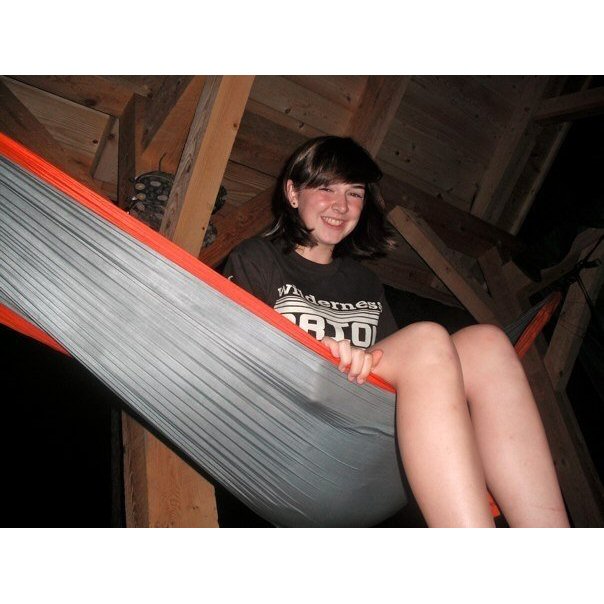by Jackie Dougherty.
As the days are getting longer, the temperatures are rising, and people are beginning to slough off their winter layers, there’s a buzz in the air: it’s camping season again! What better time to try your hand at hammock camping than this season.
Of course, if you’re new to the idea of hammock camping, you most assuredly have some pressing questions on your mind. Fret not! I’m here to ease your mind and provide a brief introduction into the awesomeness of hammock camping.
So first thing: you’re obviously going to need a hammock. Appalachian Outdoors carries a few different types. The most popular brands are Eagles Nest Outfitters and Grand Trunk Hammocks. Both are going to offer you blissful, rocking slumbers and come in single and double sizes. A single is narrower and great for day trips and relaxing at a vista or stream. A double is big enough for two people to lie in simultaneously, but even popular for individuals due to its luxurious space and extra fabric. Each hammock has a pair of carabiners attached to it for easy attachment.
You’re also going to need something to hang your hammock up with. A pair of slap straps will do the job really easily, and there are no need for any knots. They allow you to just loop around a tree, clip in with those carabiners, and swing life away. If knots are your forte, feel free to grab some tubular webbing and learn a trucker’s hitch, taught-line hitch, prussick, or bowline knots. These will allow you greater adjustability with your hammock, and you get some versatility regarding length!
As you set your hammock up, make sure you hang your hammock taught. The flatter the hammock, the more comfortable you’re going to sleep. Even when tight, hammocks will naturally sag, but hanging your hammock loosely limits your room room and won’t let you stretch out your legs. While this may be okay for a short rest or quick sit, it’s a quick way to hate sleeping in your hammock. Remember, your hammock ought to be taught.
Always make sure you are tied to trees that are large enough to handle your weight. Hanging on a sapling that bends above you isn’t safe. Also, make sure that there are no dead branches or trees (the dreaded Widow Makers) in the boughs above you. Before you hop in for the night, make sure knots are securely tied and test your hammock before giving it your full weight.
For sleeping, you’re going to want to grab your sleeping bag, but don’t forget you sleeping pad too! When you sleep in a hammock, you are compressing all the insulation of a sleeping bag underneath you, which makes it really easy for the wind to chill you. Putting a sleeping pad underneath you while you sleep, especially while it’s still cold out at night, prevents heat from being lost from your body due to convection.
It’s also not a bad idea to have a tarp. While many people jump at the opportunity to sleep under an open sky, they may not always look at the weather first. Lest we ever forget about Murphy’s Law. Having a tarp hung up over you (or just packed in case of emergency) keeps you nice and dry, no matter what Murphy calls for.
To help keep you protected from troublesome bugs, there are bug nets and hammocks imbedded with Insect Shield to help against all things that buzz and bite. For cold-weather hammock camping, look into purchasing down sleeping bags, under quilts, and over quilts that will help make your hammocking a four-season option.
Hammocks are quick and easy to set up, making them great for day hikes. Nothing beats reaching your destination and just relaxing for a bit in your hammock before heading home. Hammocks are also very lightweight, due to the parachute material they’re made from. This makes them a great option for multi-day trips as well. Many people find sleeping in a hammock incredibly comfortable, and the swinging motion helps them sleep. If you know about Leave No Trace principles, as every hiker should, hanging a hammock often leaves a much smaller impact on your surrounding campsite. At the same time, it allows you to sleep places you never could with a traditional tent or tarp. You don’t need to worry about getting flooded, about uncomfortable roots or rocks, or about pesky ground-loving creatures.
My final tip for the novice hammocker is to learn how to properly enter your hammock. Open it behind you, so that you don’t go tumbling down. It might help to set up your hammock at home and try a few times before heading out on your trip. But don’t worry, I’m pretty sure everyone makes the mistake of falling out of their hammock at least once. (I’m not the only one…right?)



Pingback: /Explore | Five on Friday: New Year’s Resolutions